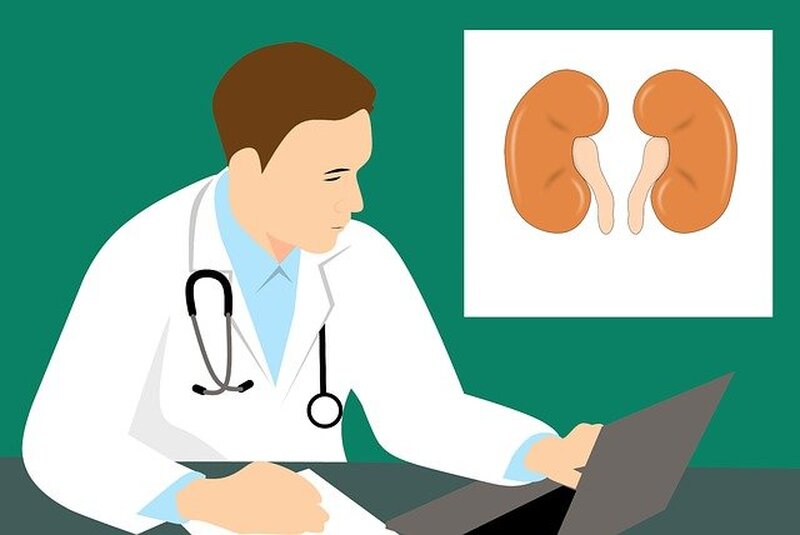Transplanting Acutely Damaged Kidneys to Treat Kidney Disease
Chronic kidney disease affects over 37 million people in the US alone, including more than half of seniors over the age of 75. It is characterized by the gradual loss of kidney function and can cause many serious physical symptoms. The purpose of the kidneys are to filter out waste and fluids from the blood, which is then excreted from the body as urine. However, patients with kidney disease suffer as fluids, electrolytes (salts in the bloodstream), and waste build up in the body. This leads to kidney disease presenting as anemia, weak bones, general weakness, and nerve damage. It can also increase the risk of heart disease.
Kidney disease can be diagnosed with a simple blood protein or urine test, imaging, or tissue biopsy. The majority of kidney disease treatments focus on medications designed to merely treat its symptoms. These include controlling high blood pressure, cholesterol, anemia, swelling, and bone density. In addition, a diet low in protein is recommended in order to minimize waste products in the blood, thereby minimizing the need for kidney filtration activities. For patients with more severe kidney disease, treatment includes dialysis or kidney transplant. Dialysis is when waste products and extra fluid are removed from the body with an artificial filtration device. However, this does not replace all kidney functions, such as producing hormones for the body’s systems. For this, kidney transplants represent a more invasive but long-term solution. A kidney transplant is when a healthy kidney from a donor is surgically placed into the recipient’s body. After a transplant, the patient will need to continue taking medications in order to prevent the new kidney from being rejected by the body, but they will not have to continue dialysis treatments. This provides the freedom to live a more normal life, as they would not have to visit a clinic multiple times a week.
Kidney disease can be diagnosed with a simple blood protein or urine test, imaging, or tissue biopsy. The majority of kidney disease treatments focus on medications designed to merely treat its symptoms. These include controlling high blood pressure, cholesterol, anemia, swelling, and bone density. In addition, a diet low in protein is recommended in order to minimize waste products in the blood, thereby minimizing the need for kidney filtration activities. For patients with more severe kidney disease, treatment includes dialysis or kidney transplant. Dialysis is when waste products and extra fluid are removed from the body with an artificial filtration device. However, this does not replace all kidney functions, such as producing hormones for the body’s systems. For this, kidney transplants represent a more invasive but long-term solution. A kidney transplant is when a healthy kidney from a donor is surgically placed into the recipient’s body. After a transplant, the patient will need to continue taking medications in order to prevent the new kidney from being rejected by the body, but they will not have to continue dialysis treatments. This provides the freedom to live a more normal life, as they would not have to visit a clinic multiple times a week.
Image Source: sasint
While kidney transplants are currently the most comprehensive solution to severe kidney disease, a major shortage of kidneys have resulted from strict donation regulations, including rejection of all donors with acute kidney injuries (AKI). As a product of the resulting 3-5 year wait time, over 9000 people drop off the waiting list annually due to death or deteriorating health. Aiming to increase kidney donor availability, a recent study assessing 2500 kidney transplants, 30% of which had some form of acute kidney injury (AKI), showed that there was no significant difference in long-term outcome between patients with an AKI or non-AKI kidney. These results suggest that increasing the donor pool to allow AKI kidneys would enable more patients to receive the transplants they need.
Kidney disease is a widespread problem that affects a significant portion of the senior population. Kidney transplants represent a dilemma for those that need them: a great solution with limited supply. Research has shown that broadening the criteria for these donated kidneys to include those with acute kidney injury could potentially increase the amount of transplants without causing any long-term harm. This has the potential to provide many more patients with a greater quality of life.
Kidney disease is a widespread problem that affects a significant portion of the senior population. Kidney transplants represent a dilemma for those that need them: a great solution with limited supply. Research has shown that broadening the criteria for these donated kidneys to include those with acute kidney injury could potentially increase the amount of transplants without causing any long-term harm. This has the potential to provide many more patients with a greater quality of life.
Featured Image Source: mohamed_hassan
RELATED ARTICLES
|
Vertical Divider
|
Vertical Divider
|
Vertical Divider
|






